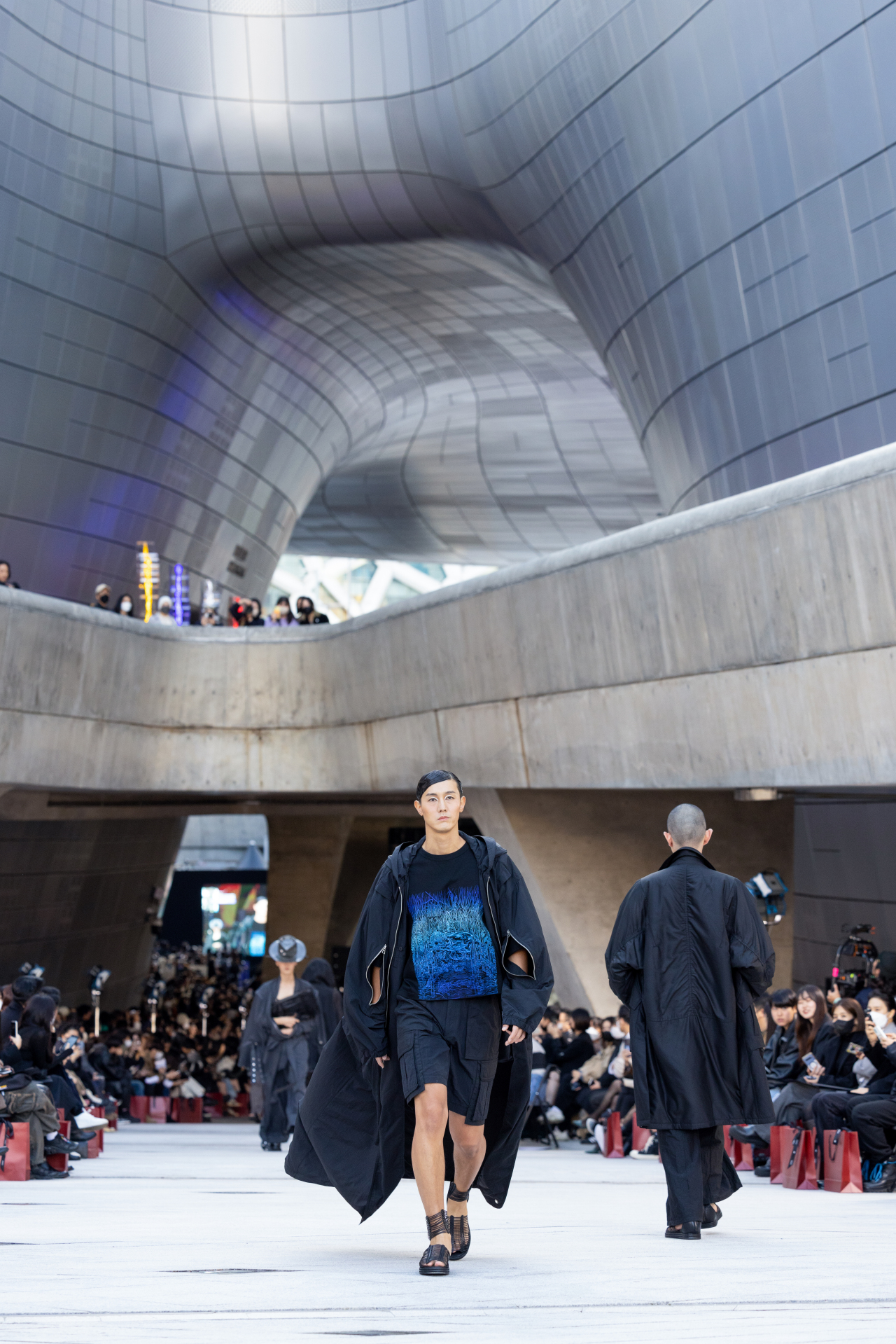 |
Models walk the 120-meter outdoor runway presenting Songzio's 2023 spring-summer collection Tuesday on the opening day of Seoul Fashion Week. (Seoul Fashion Week) |
DDP, the long-time venue for the city’s fashion week, was bustling Tuesday to Saturday with Seoulites who came to see the shows or to show off their fashion flair. Some were trendy and some were outlandish, but all were eye-catching.
The highlight of the first day of the country’s largest fashion event was the outdoor runway show by Songzio, which attracted almost 1,000 people. The 120-meter-long outdoor space was turned into a catwalk, on which star models including Cha Seung-won, Han Hye-jin and Bae Jung-nam strutted.
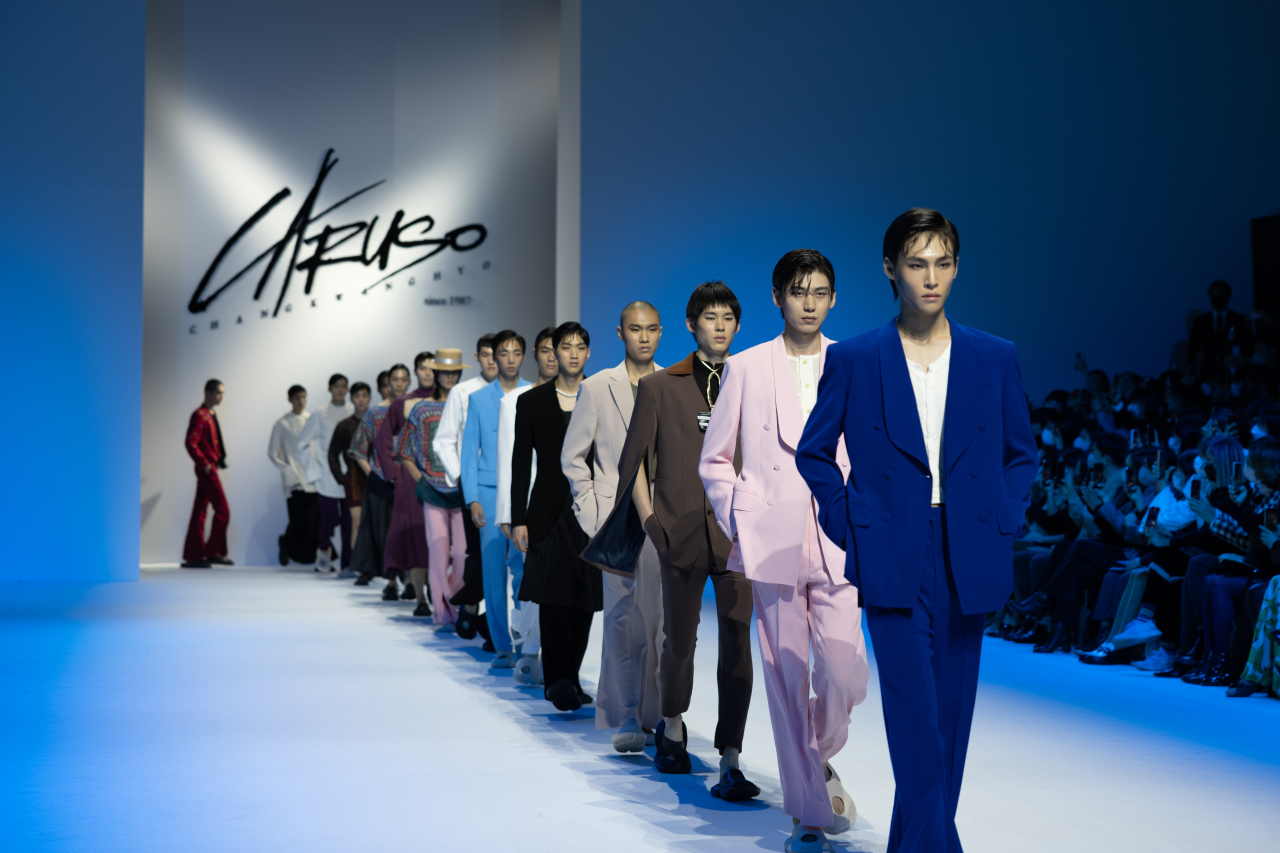 |
Caruso shows its 2023 spring-summer collection at Dongdaemun Design Plaza in Seoul on Wednesday as part of Seoul Fashion Week. (Seoul Fashion Week) |
Gender-fluid clothing was central in many of the presentations, breaking down stereotypes about mens- or womenswear, as well as a binary conceptualization of men and women. Sling Stone, Sung Ju, Caruso, Songzio, Iryuk and Not Enough Words were some of the brands that played with the notion of gender-fluid dressing.
Indeed, the gender-fluid look was seen among some men in attendance. Some were wearing pearl necklaces, a trend which seems to have caught on after Emmy-winning actor Lee Jung-jae appeared on a TV show wearing a pink jacket and a bold pearl necklace in the summer.
At Sling Stone's show themed “Heaven on the Red Carpet” on Thursday, designer Park Jong-chul showed black and white clothing that included skirts and dresses worn by male models.
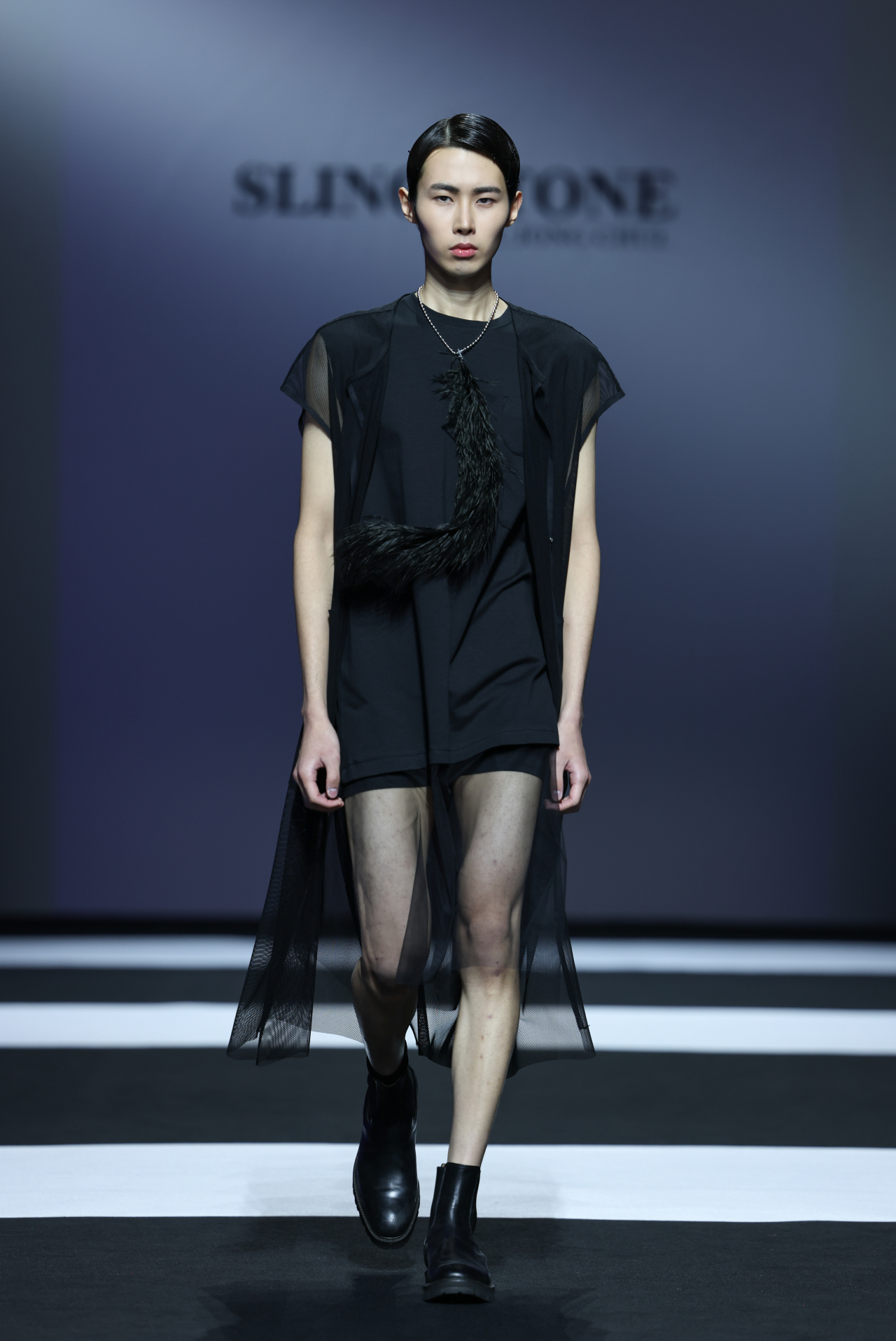 |
A model presents a gender-fluid look at Sling Stone’s 2023 spring-summer collection at Dongdaemun Design Plaza in Seoul on Thursday as part of Seoul Fashion Week. (Seoul Fashion Week) |
Taking the theme of “Between," Lim Wu-jun of Iryuk presented a genderless collection. A pair of white skirt-like pants paired with a navy jacket, oversized silhouettes and layered looks were part of the presentation.
Korean traditional aesthetics informed several collections presented at Seoul Fashion Week. Rookie designer brand July Column presented a collection reinterpreting traditions and craftsmanship for contemporary tastes. The collection was inspired by paintings by Kim Jun-geun, an enigmatic 19th century artist. Designer Park Sooy's knitted hats were inspired by Korean traditional hats made with horsehair, called "gat."
“The colors were inspired by the hues of traditional paintings – especially those from Kim’s paintings. We wanted to pay deep respect to the craftsmanship with hand-knitted hats, bags and jackets on which we collaborated with artisans,” designer Park Sooy told The Korea Herald after the show.
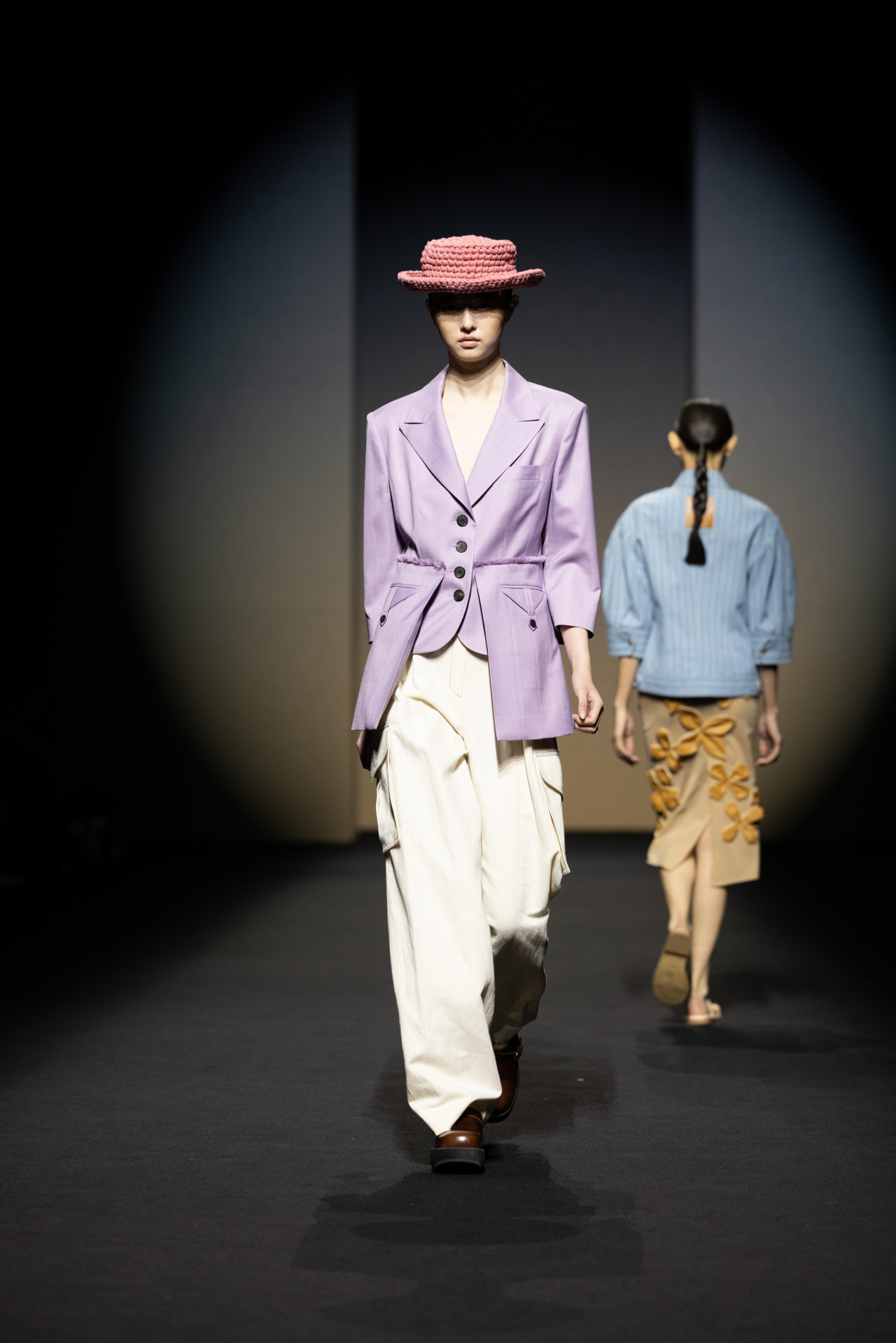 |
July Column shows its 2023 spring-summer collection at Dongdaemun Design Plaza in Seoul on Wednesday as part of Seoul Fashion Week. (Seoul Fashion Week) |
Sustainability continues to be an important practice in the fashion industry. Tibaeg claims it used recycled polyester material for 80 percent of the brand’s fabrics since its 2019 spring-summer collection. Designer Cho Eun-ae named the material “Polyester Mikado,” which became the brand's signature fabric.
Cho collaborated with artist Kwon Jian for the magnolia flower paintings that were featured in the 2023 spring-summer collection.
“The pandemic accelerated the trend of utilizing online platforms for fashion designers, presenting their collections at online showrooms. The channels for promoting one’s brand have also diversified, which made many fashion designers question the relevance of showing their collections in a physical runway show,” Cho said.
“But a physical runway show is still important for us in showcasing the brand’s identity to people who want to see the collection in person. Runway shows are also a place to interact with clients and buyers,” she said.
Veteran designer Lie Sang-bong chose to show his 2023 spring-summer collection off-venue at Dohwaseogil in Insa-dong, Jongno-gu, to commemorate the designer’s 37th anniversary.
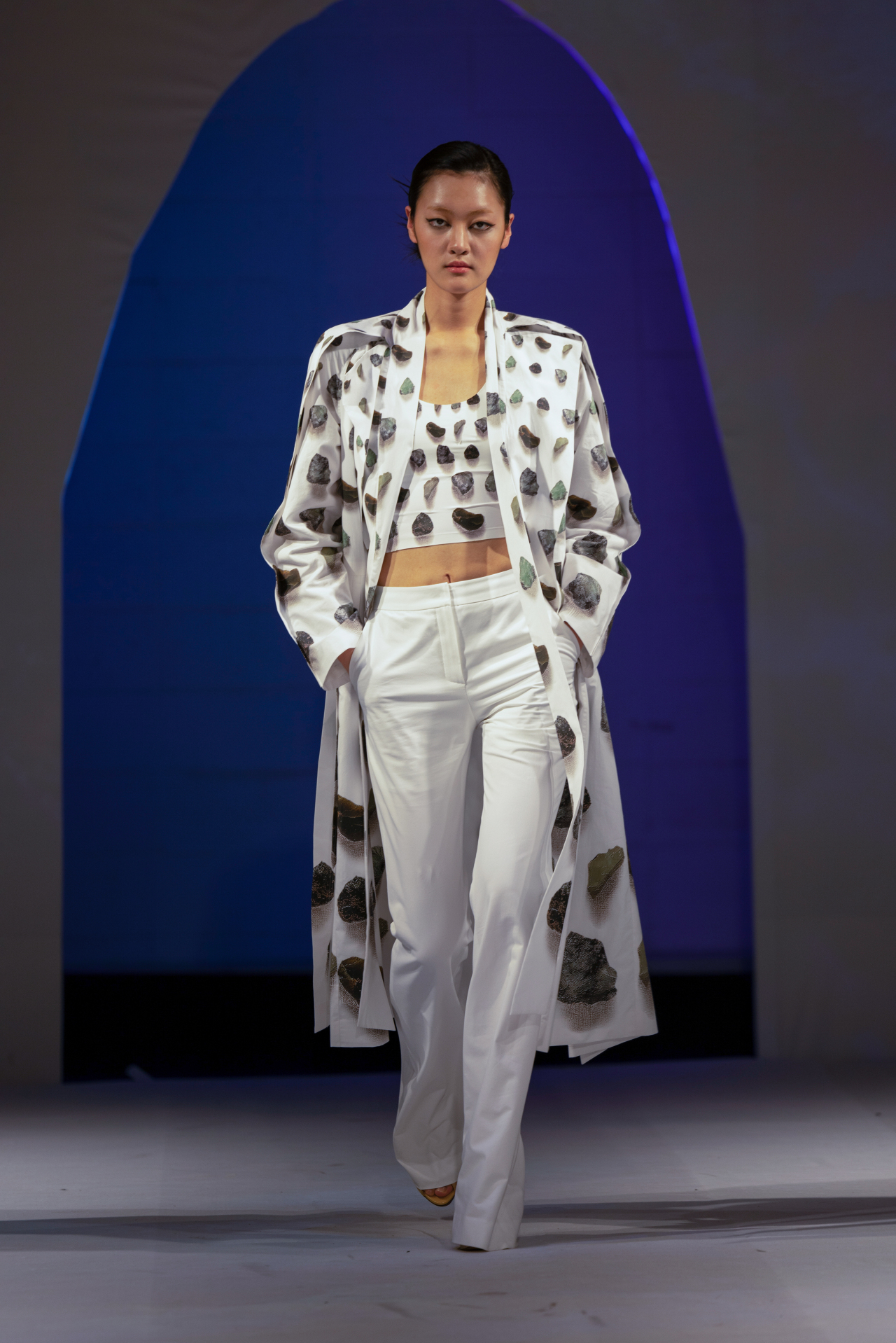 |
Lie SangBong shows the 2023 spring-summer collection at Insadong in Seoul on Wednesday as part of Seoul Fashion Week. (Seoul Fashion Week) |
Titled “Stone, Life and Universe,” the collection was shown on Wednesday and was created with eco-friendly printing techniques in collaboration with Epson Korea. Epson's digital textile printing machine allows direct printing on fabrics using far less energy and water compared to traditional methods of printing.
At the same Insa-dong venue, the fashion designer’s archival exhibition “Re-flect 37” shows the history of the fashion brand Lie Sangbong, founded in 1985. The exhibit, which runs until Oct.30, contains highlights from previous collections, including those featuring Hangeul prints and colorful paintings found in hanok, called "dancheong.”
By Park Yuna (yunapark@heraldcorp.com)






![[Today’s K-pop] Blackpink’s Jennie, Lisa invited to Coachella as solo acts](http://res.heraldm.com/phpwas/restmb_idxmake.php?idx=644&simg=/content/image/2024/11/21/20241121050099_0.jpg)
